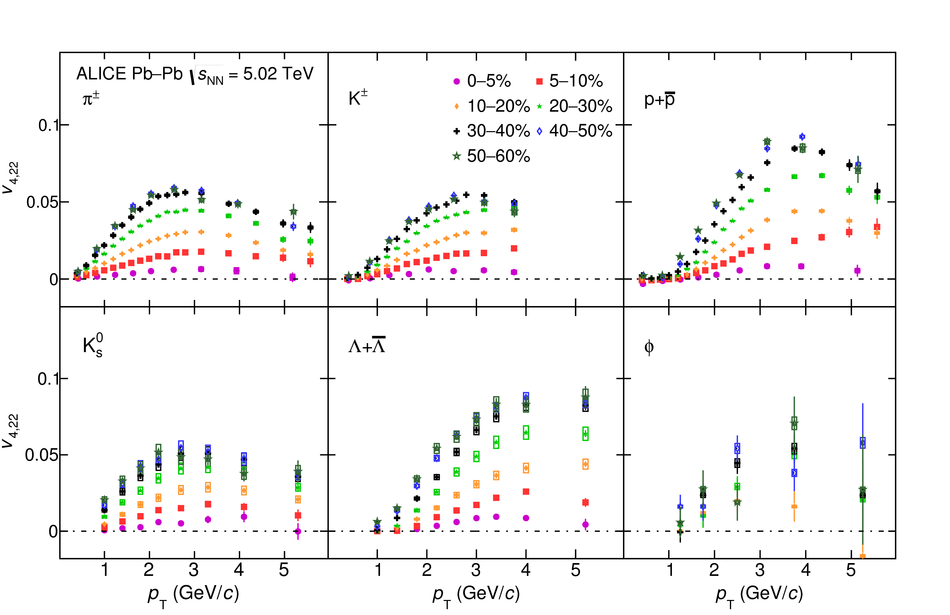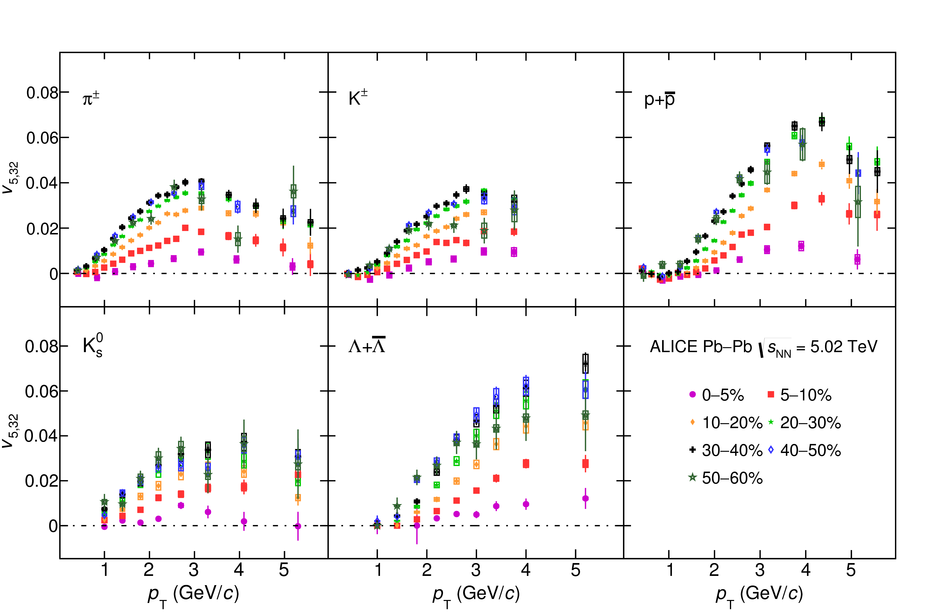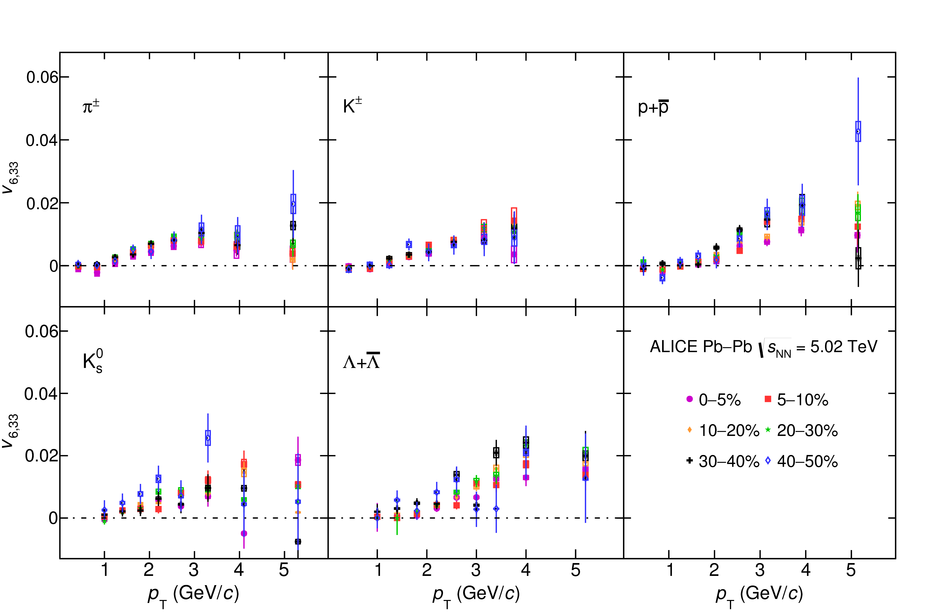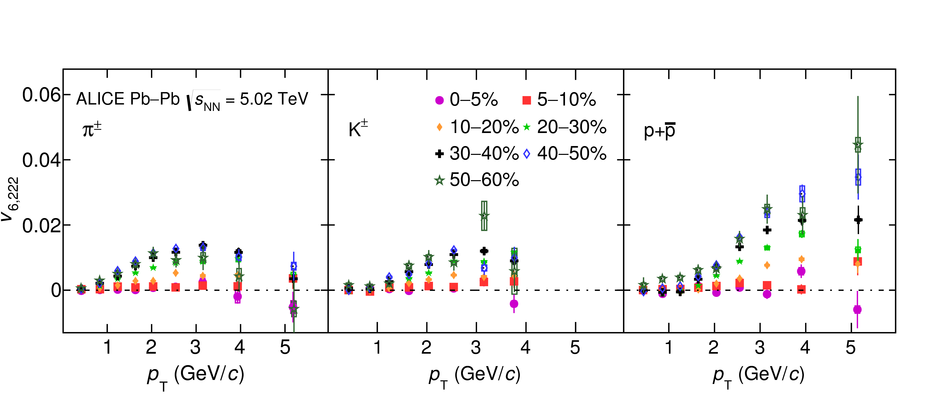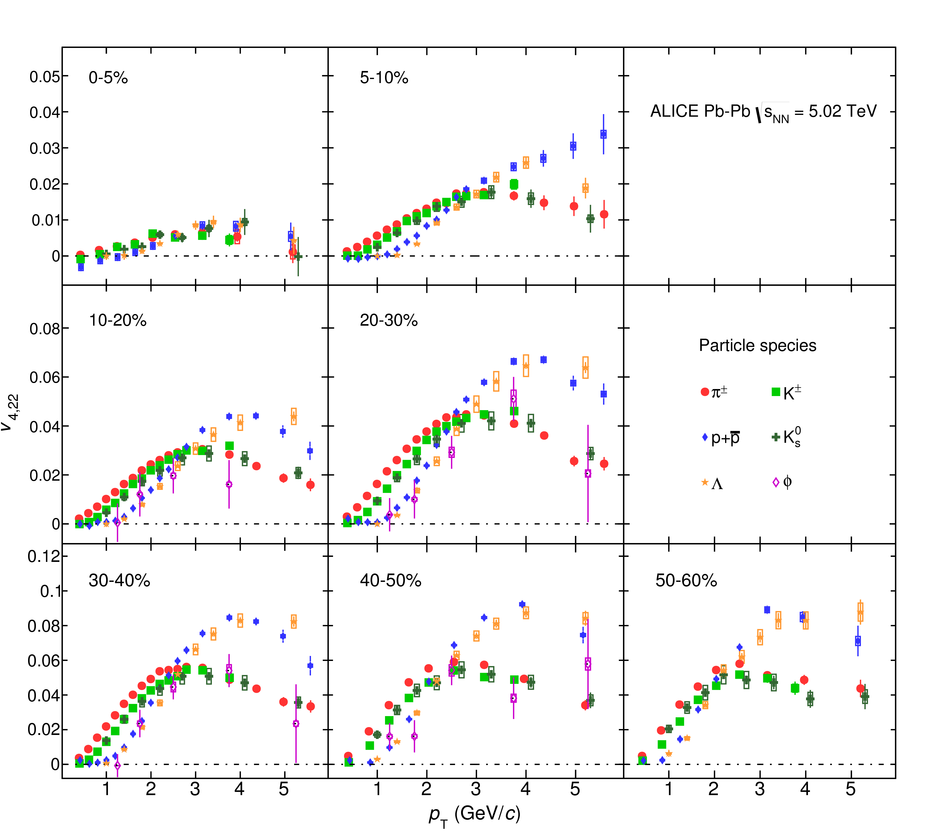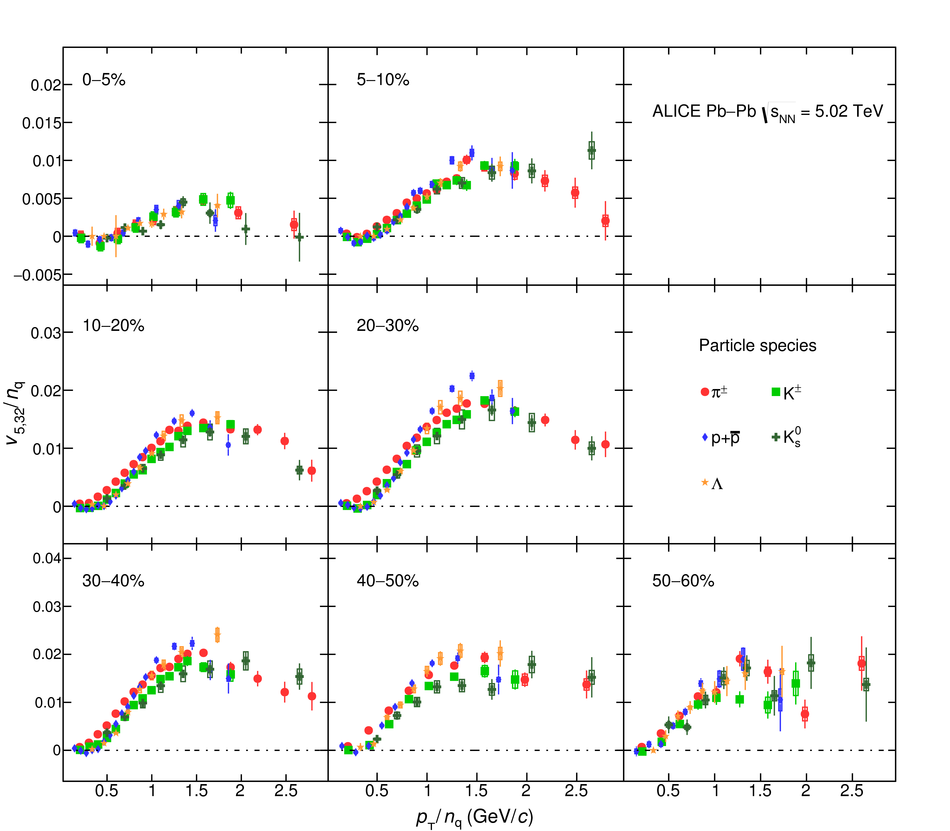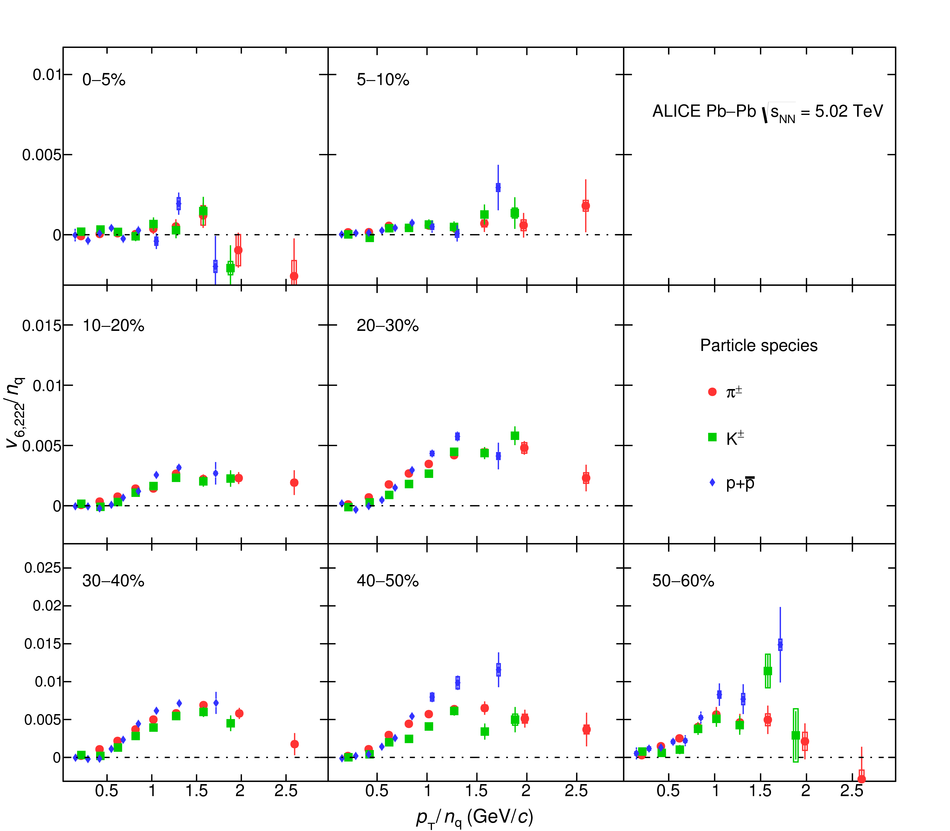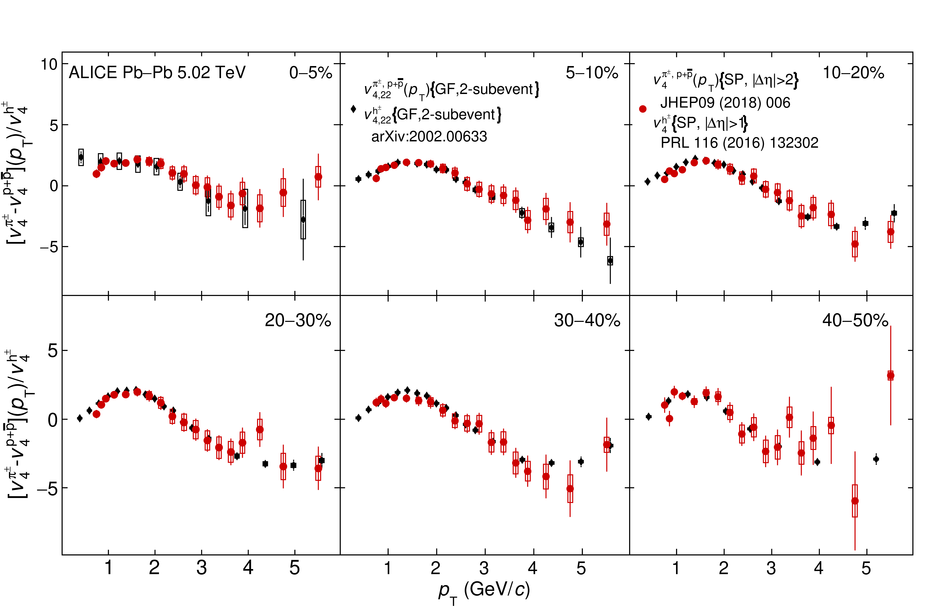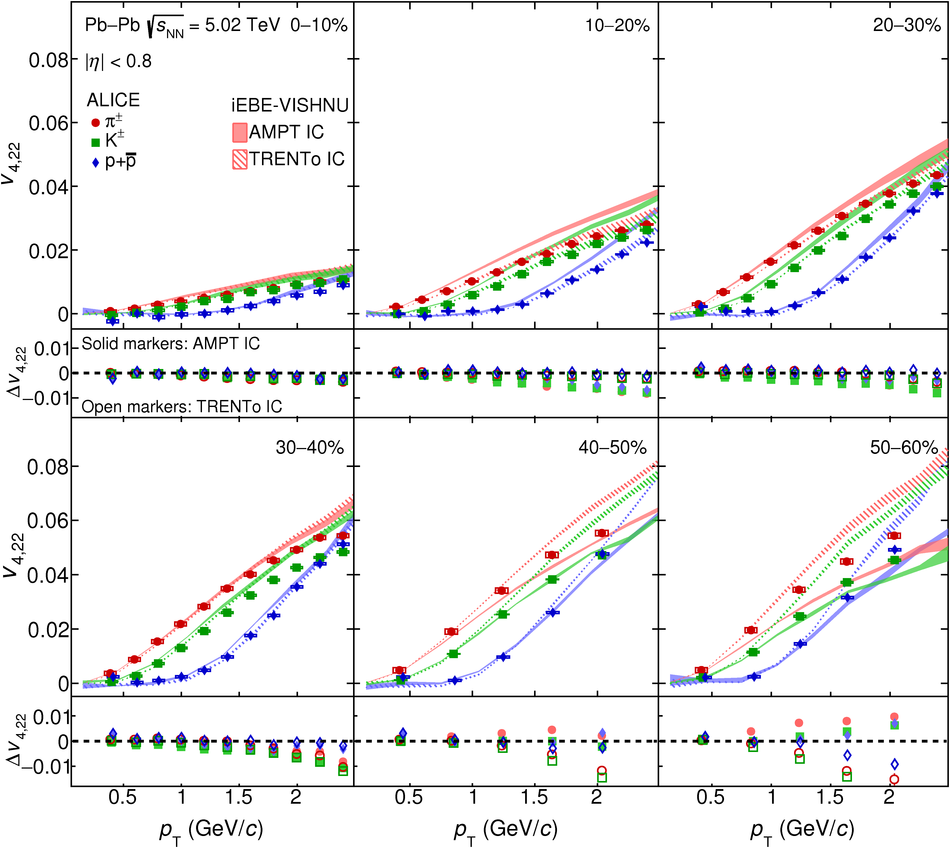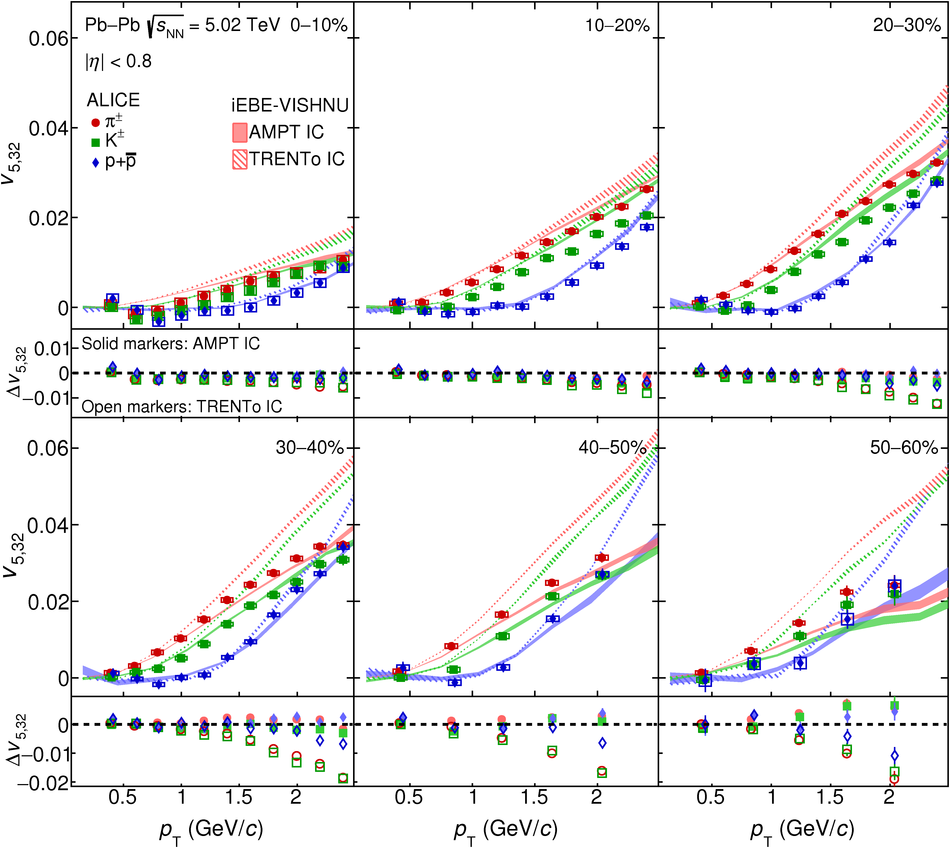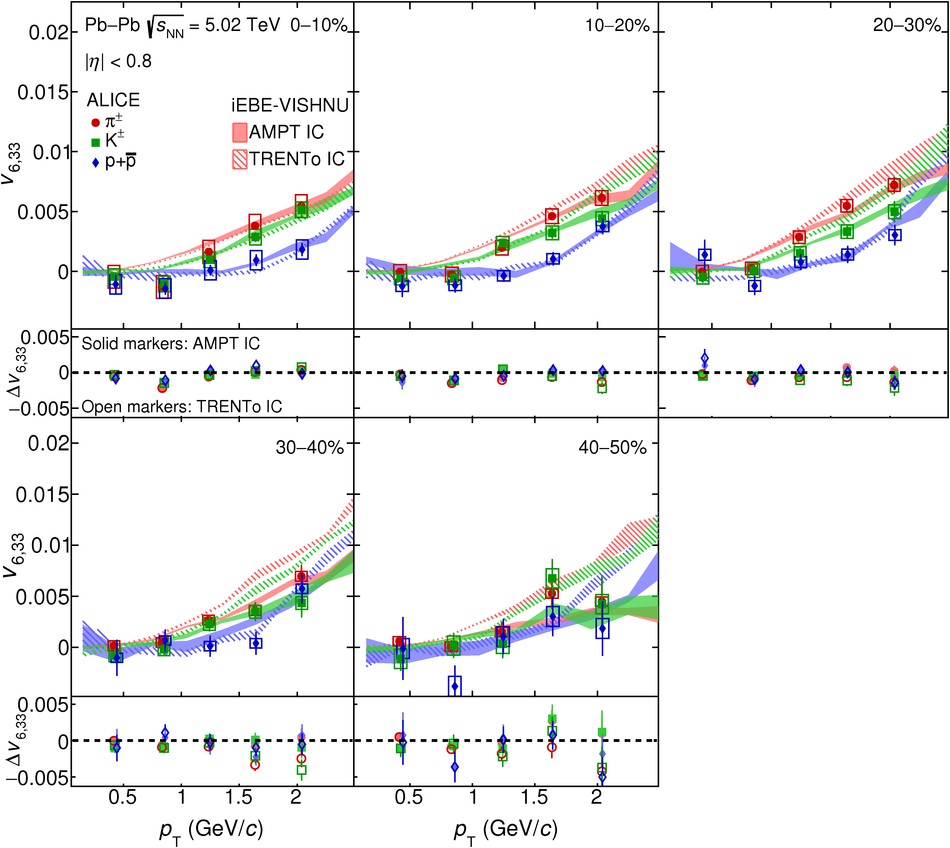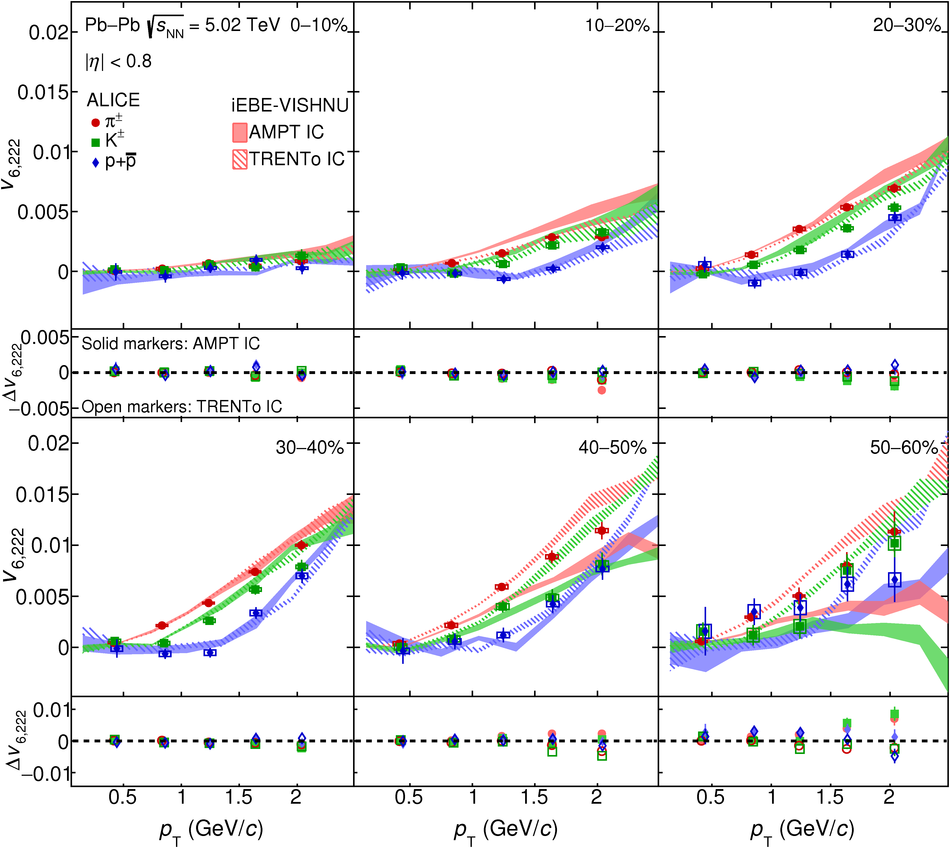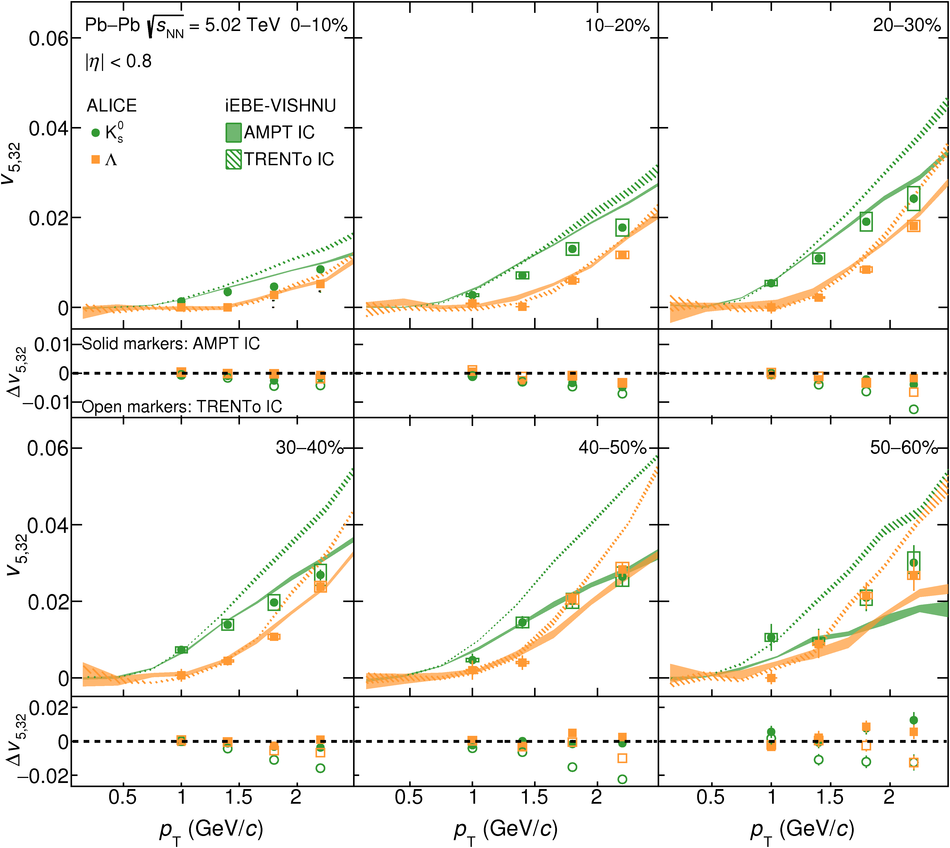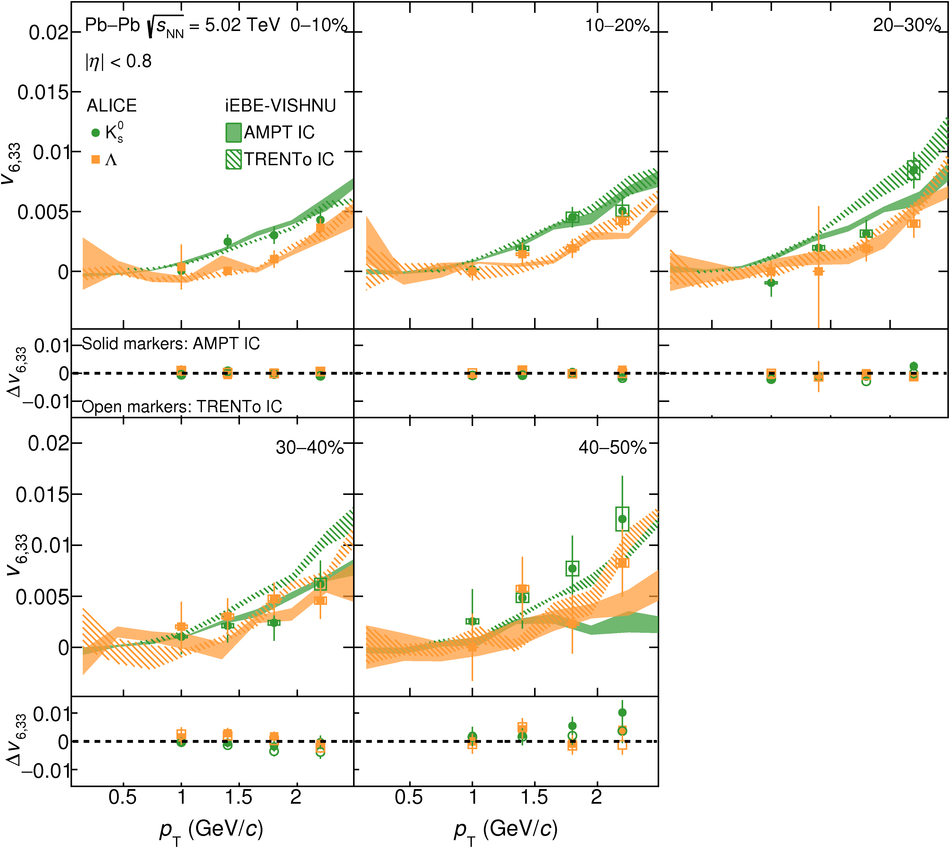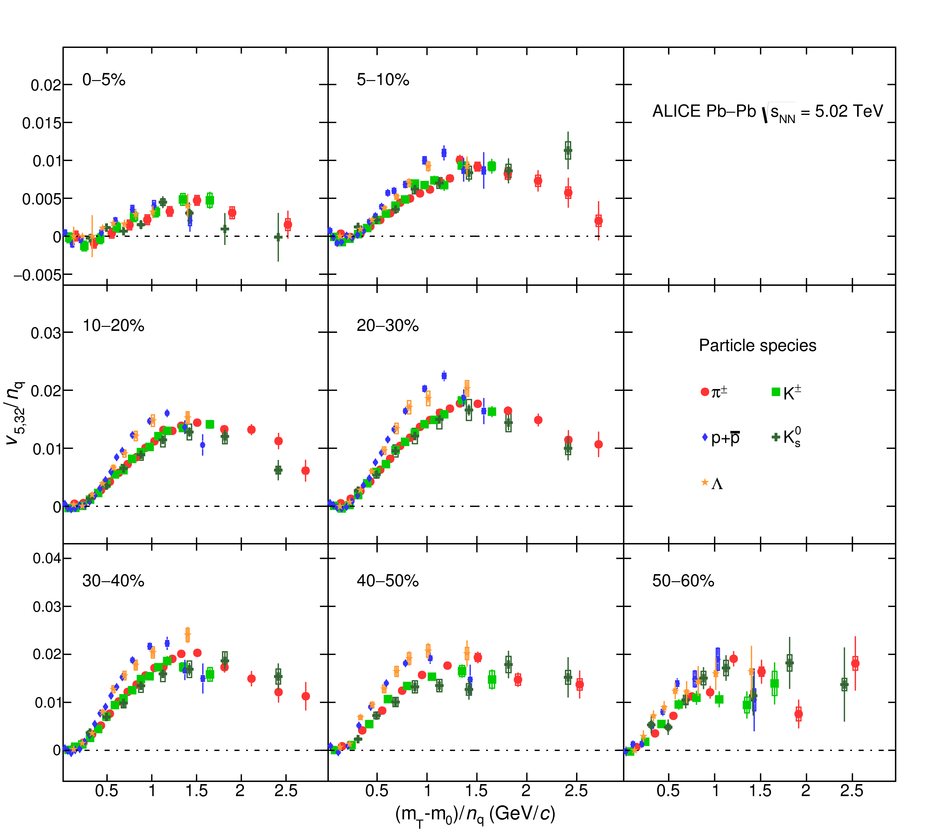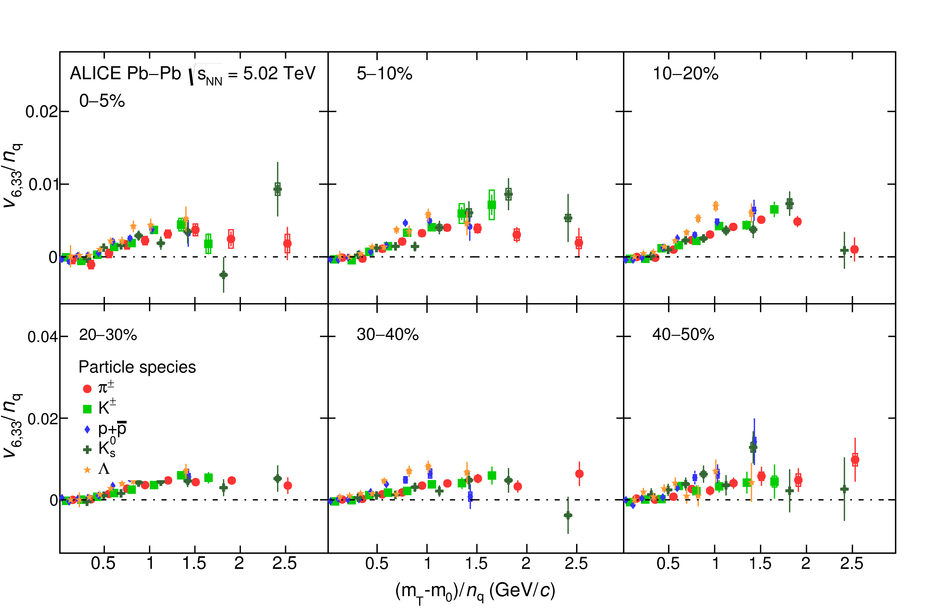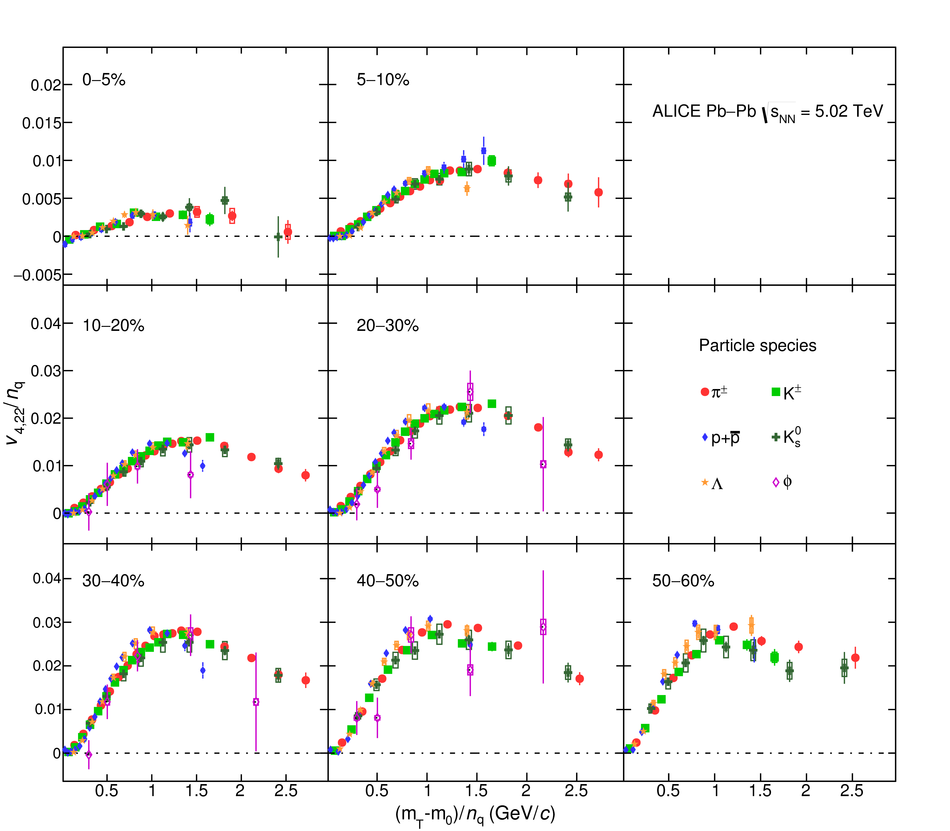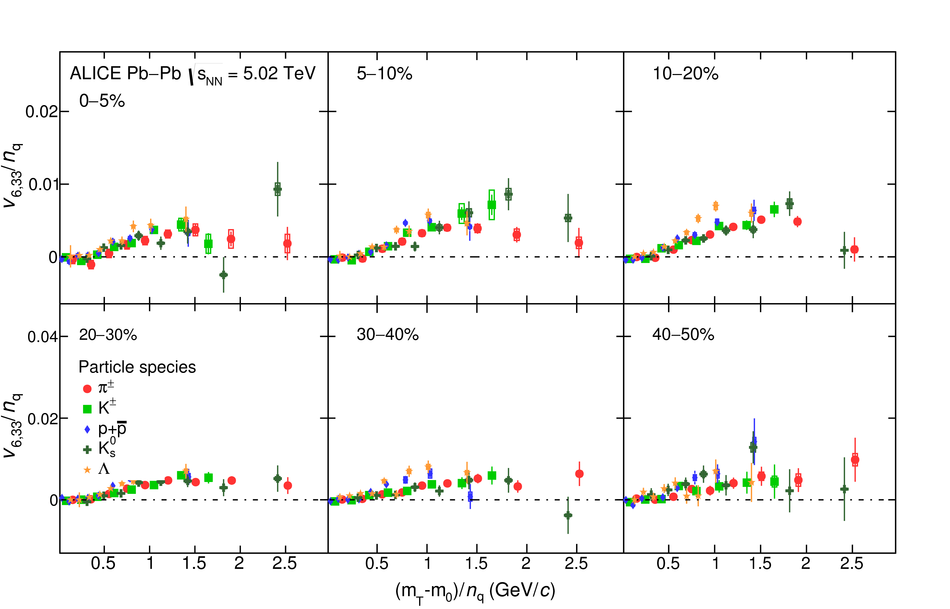The $p_{\rm{T}}$-differential non-linear flow modes, $v_{4,22}$, $v_{5,32}$, $v_{6,33}$ and $v_{6,222}$ for $\pi^{\pm}$, $\rm{K}^{\pm}$ , $\rm{K}^{0}_{S}$ , p + $\overline{\rm{p}}$, $\Lambda$ + $\overline{\Lambda}$ and $\phi$-meson have been measured for the first time at $\sqrt{s_{\rm{NN}}}$ = 5.02 TeV in Pb-Pb collisions with the ALICE detector at the Large Hadron Collider. The results were obtained with a multi-particle technique, correlating the identified hadrons with reference charged particles from a different pseudorapidity region. These non-linear observables probe the contribution from the second and third order initial spatial anisotropy coefficients to higher flow harmonics. All the characteristic features observed in previous $p_{\rm{T}}$-differential anisotropic flow measurements for various particle species are also present in the non-linear flow modes, i.e. increase of magnitude with increasing centrality percentile, mass ordering at low $p_{\rm{T}}$ and particle type grouping in the intermediate $p_{\rm{T}}$ range. Hydrodynamical calculations (iEBE-VISHNU) that use different initial conditions and values of shear and bulk viscosity to entropy density ratios are confronted with the data at low transverse momenta. These calculations exhibit a better agreement with the anisotropic flow coefficients than the non-linear flow modes. These observations indicate that non-linear flow modes can provide additional discriminatory power in the study of initial conditions as well as new stringent constraints to hydrodynamical calculations.
JHEP06 (2020) 147
e-Print: arXiv:1912.00740 | PDF | inSPIRE
CERN-EP-2019-271


